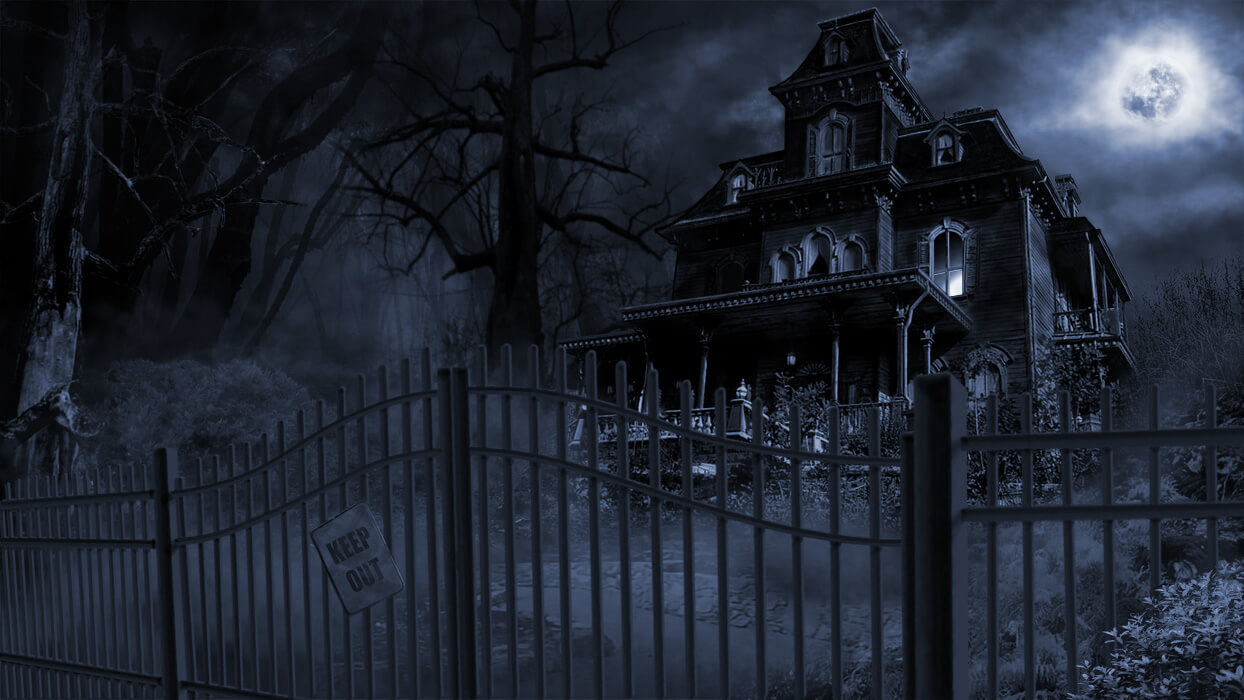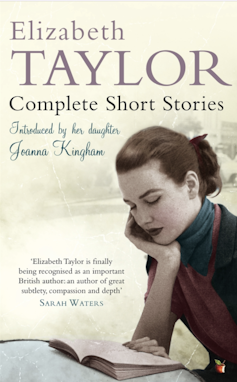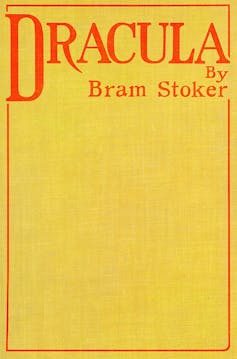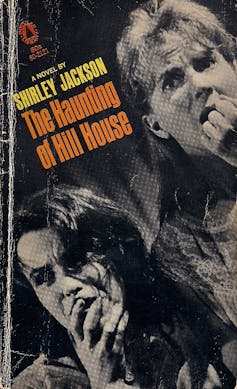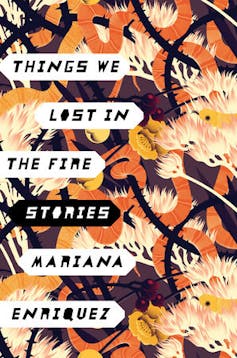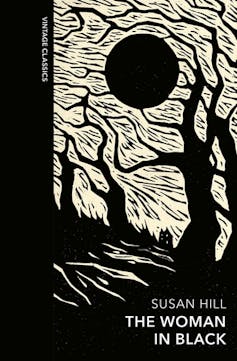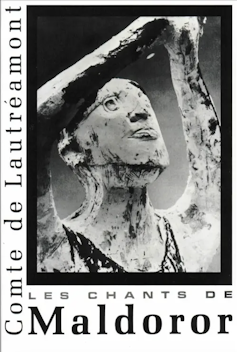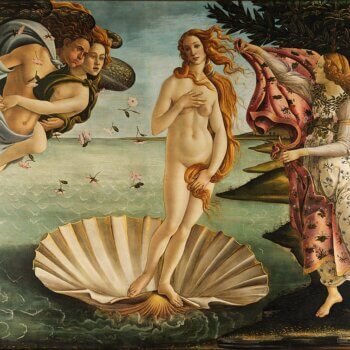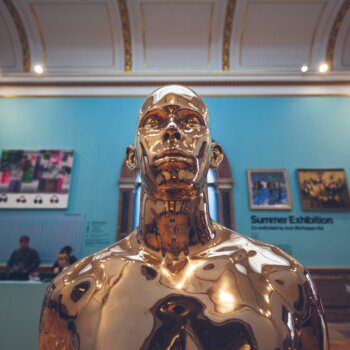A truly scary story never really leaves you. It lurks in long evening shadows, calls out through mysterious bumps in the night and blows down your neck whenever you feel a sudden shiver. With Halloween approaching, we asked six of our academic experts to tell us about the scariest book they’ve ever read. From haunted houses to murderous beasts and villainous vampires, these are the spooky reads that have stayed with them long after they turned the final page.
A Dictionary of Monsters and Mysterious Beasts, by Carey Miller (1974)
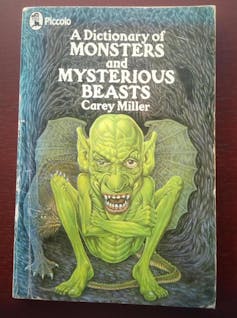
Lady Macbeth says it’s “The eye of childhood / That fears a painted devil.” She’s right. I bought A Dictionary of Monsters and Mysterious Beasts at a school book fair when I was seven. I was intrigued by the glowering goblin on the cover (who looked like my science teacher) and the jacket’s promise of creatures “fair and foul, fascinating and frightening” (another Macbeth allusion, not that I knew it).
I relished the weirdness of amphisbaenas (two-headed ant-eating reptiles), basilisks (which hatched from cockerels’ eggs and had petrifying breath) and manticores (which somehow combined a man’s face, a lion’s body and a scorpion’s tail). But nothing prepared me for page 172. Mary French’s drawing of a werewolf gave me nightmares.
But I kept looking at it until I moved gradually to stronger fare: anthologies of classic gothic tales edited by Peter Haining and, as adolescence arrived, the thrillingly visceral horrors of James Herbert and Guy N. Smith. Miller’s book was undeniably a landmark in the development of my literary interests. I never go anywhere without silver bullets.
Join our readers who subscribe to free evidence-based news
Get newsletter
Reviewed by Nick Freeman, reader in late-Victorian literature
The Flypaper, by Elizabeth Taylor (1969)
“Scary” is too glib a word for the chillingly believable conclusion of the author Elizabeth Taylor’s short story, The Flypaper. It starts with 11-year-old Sylvia, unloved and unlovely, riding the bus to her hated music lesson in the drab outskirts of a provincial town.
When a man starts harassing her, she is reassured by a middle-aged lady who she feels is “keeping an eye on the situation”. It is this lady who comes to the rescue when the man follows Sylvia off the bus, by taking her home to her own house.
The shocking denouement features a table laid for three and the flypaper of the title: “Some of the flies were still half alive, and striving hopelessly to free themselves. But they were caught forever.” Roald Dahl adapted this story for his collection, Tales of the Unexpected in 1979, saying: “It is so neat and nice and spooky that I only wish I had thought of it myself.”
Reviewed by Colette Paul, senior lecturer in creative writing
Dracula, by Bram Stoker (1897)
Reading Bram Stoker’s Dracula was an unsettling experience I can’t forget. The story unfolds through journal entries and letters, revolving around a young solicitor who discovers that his client is a vampire. You know that feeling when something is so terrifying yet beautiful that you can’t look away? That’s what Dracula is for me.
What makes the novel so scary isn’t the blood or the fangs. It’s this confluence of terror and beauty. Dracula is a figure of grandeur and grotesque elegance. He’s not just a monster: he’s an enigma, charming yet deadly, poetic yet predatory.
This paradoxical allure, manifesting in the character and the setting, left me torn between fear and fascination. And that, to me, is far more haunting than simple gore or shock factor. This is a book that doesn’t just scare, it haunts, sticking with you long after you’ve put it down.
Reviewed by Wayne Wong, lecturer in East Asian studies
The Haunting of Hill House, by Shirley Jackson (1959)
“Hill House is vile, it is diseased,” muses protagonist Eleanor Vance, on approach to the titular manor of Shirley Jackson’s 1959 novel The Haunting of Hill House. She has been invited as part of a small group to investigate the alleged ghost that resides in the building, but her relationship with Hill House soon becomes obsessive.
The reason it has stayed with me more than any other novel is because it’s a book about the way we convince ourselves of things lurking in dark corners. Jackson, like me, suffered from parasomnias such as sleepwalking and nightmares, and there are moments in The Haunting of Hill House where the spookiness manifests itself through Vance’s sleep and dream-like trance states.
In my own book, Night Terrors, I write about how troubled sleep can make you feel as though you’re being haunted. Jackson’s book demonstrates perfectly how our minds create our own ghosts.
Reviewed by Alice Vernon, lecturer in creative writing and 19th-century literature
Things We Lost in the Fire, by Mariana Enríquez, translated by Megan McDowell (2016)
A book that still scares me whenever I think of it is Things We Lost in the Fire, a 2016 short story collection by Argentine writer Mariana Enríquez. The stories take conventional horror tropes – murder, mutilation, abuse, the occult – and weave them into contemporary tales of Buenos Aires.
The stories shift between satirical realism and brutal surrealism, often when you least expect it. A tale of poverty tourism, for example, morphs into a nightmare in which the protagonist no longer knows if a young mother and child she met have been murdered or never even existed. Elsewhere, a neighbour concerned about the welfare of a child has a shocking encounter with the monstrous that completely inverts our assumptions.
In the title story, young women make a stand against endemic ill treatment by undertaking an appallingly deliberate and systematic purging through fire. Here, the personal is both political and horrifying.
Reviewed by Carina Hart, assistant professor in applied English
The Woman in Black, by Susan Hill (1983)
Nothing is more frightening than isolation. A place miles away from the nearest house or village where, as cliche as it sounds, there is no one to hear you scream. Susan Hill’s The Woman in Black serves as a truly haunting example of this. Lawyer Arthur Kipps is hired to settle the estate of the late Alice Drablow and embarks on a trip to her home, Eel Marsh House.
The house is separated from the nearest village by a causeway, which disappears at high tide. This leaves Kipps trapped in the house, accompanied only by Spider the dog and the wandering phantom of the Woman in Black, who haunts Kipps as he tries to sort through the mystery of the Drablow family.
The expertly plotted novel walks you gently into terrors you won’t soon forget. No literary moment has ever gripped me more than Hill’s agonisingly slow-paced description of Spider, bolt upright and listening, as an empty rocking chair scrapes against the nursery floor.
Reviewed by Lucy Atkinson, PhD candidate in creative writing
Les Chants de Maldoror, by Isidore Ducasse (1868-1869)
Written under the pen name Comte de Lautreamont, Isidore Ducasse’s Les Chants de Maldoror (The Songs of Maldoror) did not scare me, but its images have long haunted me. This deranged and surreal work takes readers into the mind of Maldoror, a misanthropic wanderer who revels in his unrepentant evil.
The book’s self-described “poison-filled pages” have a nightmarish quality throughout, with disturbing and yet sometimes darkly poetic descriptions of murder, malice and madness. These mix with fever dream imagery, such as Maldoror copulating with a shark – the only predator that is his equal.
An act of youthful provocation (Ducasse was only 24 when he died a year after its publication), the book is a literary bayonet that jabs at God, society and the moral taboos that help prop it up. Structured into six “instructive poems”, Ducasse’s fantasies of torture, violence and degradation powerfully remind us that our own darker, antisocial impulses can be far more unsettling than any supernatural horrors.
Reviewed by Karl Bell, reader in cultural history
